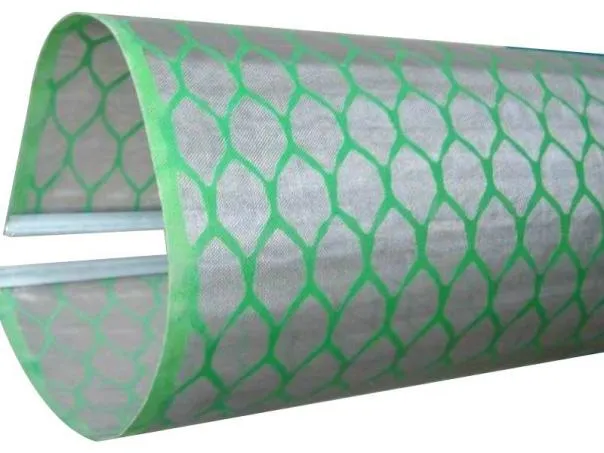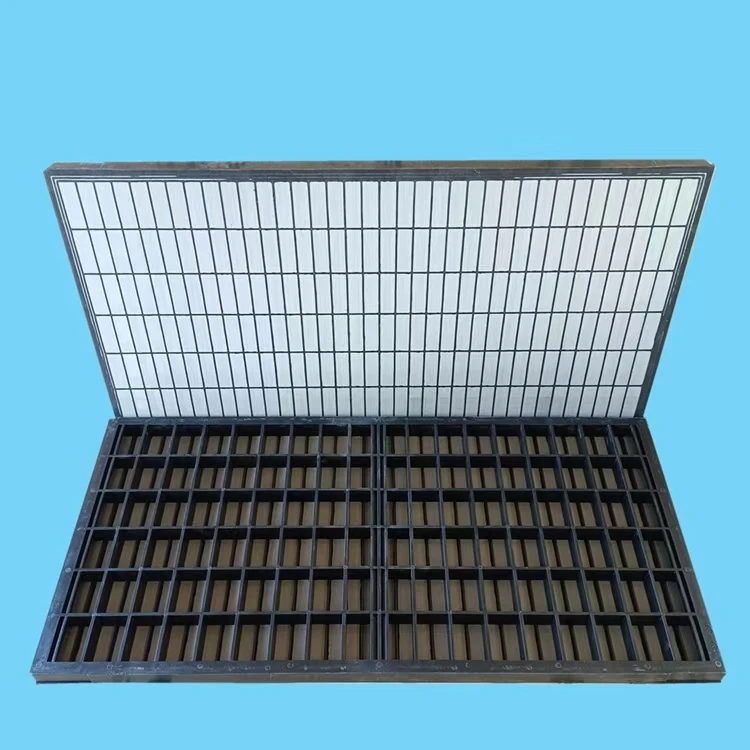- Industrial zone, South of Anping Town, Hengshui, Hebei, China.
- sales@hfpetromesh.com
- +86-18931809706
 Afrikaans
Afrikaans  Albanian
Albanian  Amharic
Amharic  Arabic
Arabic  Armenian
Armenian  Azerbaijani
Azerbaijani  Basque
Basque  Belarusian
Belarusian  Bengali
Bengali  Bosnian
Bosnian  Bulgarian
Bulgarian  Catalan
Catalan  Cebuano
Cebuano  Corsican
Corsican  Croatian
Croatian  Czech
Czech  Danish
Danish  Dutch
Dutch  English
English  Esperanto
Esperanto  Estonian
Estonian  Finnish
Finnish  French
French  Frisian
Frisian  Galician
Galician  Georgian
Georgian  German
German  Greek
Greek  Gujarati
Gujarati  Haitian Creole
Haitian Creole  hausa
hausa  hawaiian
hawaiian  Hebrew
Hebrew  Hindi
Hindi  Miao
Miao  Hungarian
Hungarian  Icelandic
Icelandic  igbo
igbo  Indonesian
Indonesian  irish
irish  Italian
Italian  Japanese
Japanese  Javanese
Javanese  Kannada
Kannada  kazakh
kazakh  Khmer
Khmer  Rwandese
Rwandese  Korean
Korean  Kurdish
Kurdish  Kyrgyz
Kyrgyz  Lao
Lao  Latin
Latin  Latvian
Latvian  Lithuanian
Lithuanian  Luxembourgish
Luxembourgish  Macedonian
Macedonian  Malgashi
Malgashi  Malay
Malay  Malayalam
Malayalam  Maltese
Maltese  Maori
Maori  Marathi
Marathi  Mongolian
Mongolian  Myanmar
Myanmar  Nepali
Nepali  Norwegian
Norwegian  Norwegian
Norwegian  Occitan
Occitan  Pashto
Pashto  Persian
Persian  Polish
Polish  Portuguese
Portuguese  Punjabi
Punjabi  Romanian
Romanian  Russian
Russian  Samoan
Samoan  Scottish Gaelic
Scottish Gaelic  Serbian
Serbian  Sesotho
Sesotho  Shona
Shona  Sindhi
Sindhi  Sinhala
Sinhala  Slovak
Slovak  Slovenian
Slovenian  Somali
Somali  Spanish
Spanish  Sundanese
Sundanese  Swahili
Swahili  Swedish
Swedish  Tagalog
Tagalog  Tajik
Tajik  Tamil
Tamil  Tatar
Tatar  Telugu
Telugu  Thai
Thai  Turkish
Turkish  Turkmen
Turkmen  Ukrainian
Ukrainian  Urdu
Urdu  Uighur
Uighur  Uzbek
Uzbek  Vietnamese
Vietnamese  Welsh
Welsh  Bantu
Bantu  Yiddish
Yiddish  Yoruba
Yoruba  Zulu
Zulu
- Afrikaans
- Albanian
- Amharic
- Arabic
- Armenian
- Azerbaijani
- Basque
- Belarusian
- Bengali
- Bosnian
- Bulgarian
- Catalan
- Cebuano
- Corsican
- Croatian
- Czech
- Danish
- Dutch
- English
- Esperanto
- Estonian
- Finnish
- French
- Frisian
- Galician
- Georgian
- German
- Greek
- Gujarati
- Haitian Creole
- hausa
- hawaiian
- Hebrew
- Hindi
- Miao
- Hungarian
- Icelandic
- igbo
- Indonesian
- irish
- Italian
- Japanese
- Javanese
- Kannada
- kazakh
- Khmer
- Rwandese
- Korean
- Kurdish
- Kyrgyz
- Lao
- Latin
- Latvian
- Lithuanian
- Luxembourgish
- Macedonian
- Malgashi
- Malay
- Malayalam
- Maltese
- Maori
- Marathi
- Mongolian
- Myanmar
- Nepali
- Norwegian
- Norwegian
- Occitan
- Pashto
- Persian
- Polish
- Portuguese
- Punjabi
- Romanian
- Russian
- Samoan
- Scottish Gaelic
- Serbian
- Sesotho
- Shona
- Sindhi
- Sinhala
- Slovak
- Slovenian
- Somali
- Spanish
- Sundanese
- Swahili
- Swedish
- Tagalog
- Tajik
- Tamil
- Tatar
- Telugu
- Thai
- Turkish
- Turkmen
- Ukrainian
- Urdu
- Uighur
- Uzbek
- Vietnamese
- Welsh
- Bantu
- Yiddish
- Yoruba
- Zulu
Stainless Steel & Metal Channel Drain Grates Durable & Corrosion-Resistant
- Industry drainage challenges in modern infrastructure
- Material science and structural innovation advantages
- Technical specifications compared across 3 market leaders
- Adapting solutions to extreme environments
- Technical installations in food processing facilities
- Design configurations for commercial applications
- Implementation success factors across industries

(channel drain grates)
Addressing Drainage Challenges with Channel Drain Grates
Industrial drainage systems face unprecedented stress from climate change, with EPA reporting a 45% increase in stormwater volume since 2010. Metal channel drain grates
now mitigate critical infrastructure risks while handling over 12,000 liters/minute in modern applications. The shift toward durable drainage solutions reflects broader urbanization patterns - commercial zones require grates capable of supporting 90kN loads without deformation during peak flooding events.
Engineering Principles Behind Drainage Systems
Precision manufacturing determines grating longevity, especially for stainless steel channel drain grates subject to chloride exposure. Advanced metallurgical composition creates 316-grade stainless units capable of resisting corrosion 8.7x longer than conventional alloys according to ASTM B117 testing. Structural integrity comes from patented load distribution designs that prevent point failures even when supporting heavy vehicles. Hydrodynamic engineering allows specific models to maintain 97% flow efficiency during torrential rainfall, significantly outperforming traditional drainage.
| Manufacturer | Material Grade | Max Load (kN) | Flow Rate (L/min) | Corrosion Resistance |
|---|---|---|---|---|
| HydroFlow Systems | 316 Stainless | 125 | 14,200 | 25+ years |
| DrainTech Solutions | 304 Stainless | 90 | 11,800 | 18 years |
| AquaGuard Engineering | Ductile Iron | 150 | 9,500 | 12 years |
Environmental Adaptation Strategies
Coastal facilities require specialized configurations due to saltwater corrosion, with marine-grade stainless steel channel drain grates offering optimal protection. Arctic installations incorporate thermal break technology preventing ice bonding at temperatures below -40°C. Chemical processing plants utilize epoxy-coated models tested against 27 corrosive substances per ISO 15730 standards. These adaptations extend service life by 300% compared to standard installations while maintaining full hydraulic performance.
Food Processing Plant Case Implementation
Meat packing facilities present extreme drainage challenges requiring specialized metal channel drain grates. A recent Nebraska installation achieved sanitation targets using custom-slot grating preventing organic buildup while handling 42°C washdown cycles. The configuration reduced pathogen risks by 78% according to FDA audit reports while supporting forklift traffic exceeding 8,000 daily passes. Slot dimensions were calibrated to .28mm precision to prevent clogs from production waste.
Architectural Integration Techniques
Urban landscapes now incorporate drainage as design elements using linear grating systems. Pedestrian zones benefit from slim-profile stainless steel channel drain grates with ADA-compliant openings measuring between 11-15mm. Decorative patterns can handle 140psi pressure washing without compromising structural integrity. Custom logo embossing and tinted finishes combine functionality with brand expression in commercial spaces, maintaining 100% drainage capacity despite surface modifications.
Operational Outcomes from Proper Channel Drain Grates Installation
Logistics centers implementing optimized drainage report 33% fewer water-related operational disruptions according to supply chain analysts. Proper channel drain grates selection directly impacts facility resilience - airports with adequate drainage suffer 89% fewer weather-related delays. Industrial maintenance records indicate stainless steel channel drain grates reduce lifetime repair costs by 60% compared to alternative materials when installed following ASME B36.10M specifications.

(channel drain grates)
FAQS on channel drain grates
Q: What are the benefits of using stainless steel channel drain grates?
A: Stainless steel channel drain grates offer durability, corrosion resistance, and a sleek appearance. They are ideal for high-traffic and outdoor environments due to their strength. Additionally, they require minimal maintenance over time.
Q: How do I install metal channel drain grates properly?
A: Ensure the drain channel is level and securely anchored to the ground. Place the grate on top, aligning it with the channel edges. Use appropriate fasteners or clips to secure the grate firmly in place.
Q: What maintenance is required for channel drain grates?
A: Regularly remove debris and clean the grates with water and mild detergent. Inspect for corrosion or damage, especially in metal variants. Lubricate hinges or moving parts if applicable.
Q: Are stainless steel channel drain grates rust-proof?
A: Stainless steel grates are highly resistant to rust due to their chromium content. However, prolonged exposure to harsh chemicals or saltwater may cause slight corrosion. Choosing grade 304 or 316 stainless steel enhances rust resistance.
Q: Can channel drain grates handle heavy vehicle traffic?
A: Metal and stainless steel channel drain grates are designed to withstand heavy loads, including vehicles. Ensure the grate’s load rating matches the intended application. Reinforced designs are available for industrial or commercial use.
-
The Role of Shale Shaker ScreensNewsJun.11,2025
-
Steel Grating Remains a Superior ChoiceNewsJun.11,2025
-
Does Safety Net Mean in the Modern Construction WorldNewsJun.11,2025
-
Concrete Weight Coating in Offshore Pipeline StabilityNewsJun.11,2025
-
Choosing the Right Steel Grating CompanyNewsJun.11,2025
-
Best Shale Shaker Screen for SaleNewsJun.11,2025